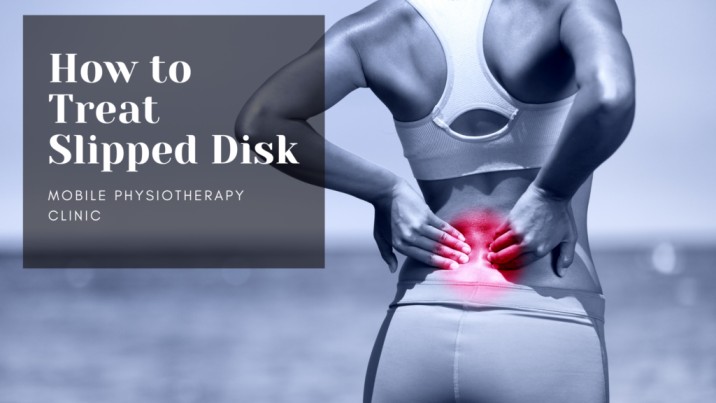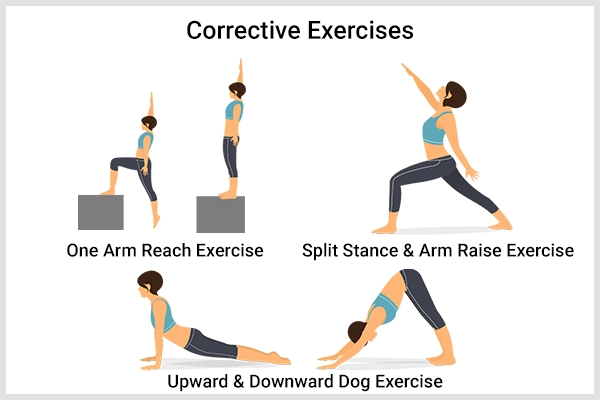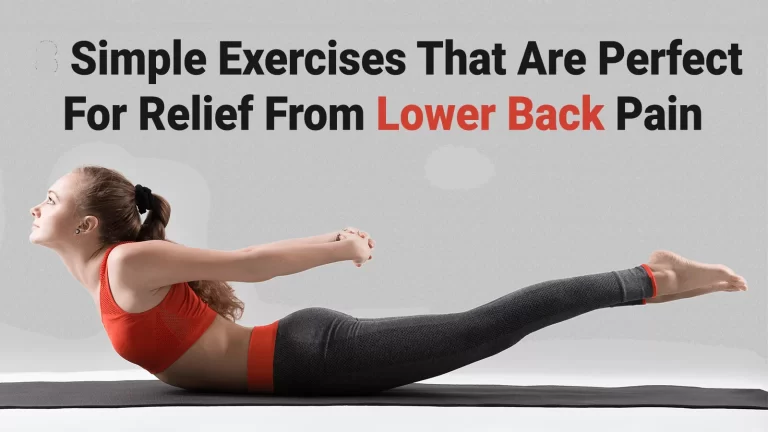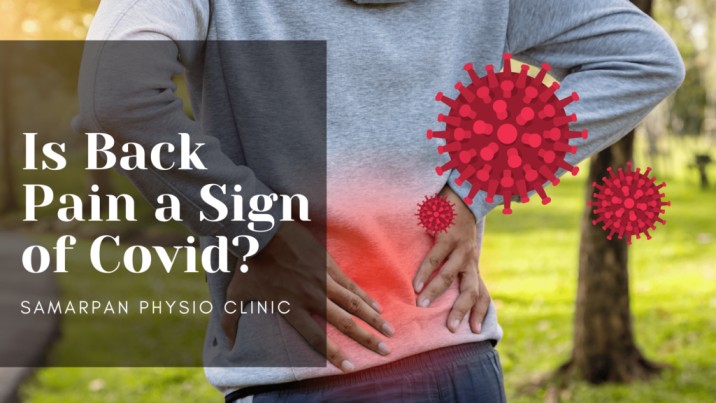How to Treat Slipped Disk
We are going to tell you that “How to Treat Slipped Disk”? You’ll also be going to know “Treatment of Slipped Disk” and most importantly “What Exercises to do“.
What is a Slipped Disc?
A human’s spinal column is made up of a series of bones (vertebrae) stacked onto each other. From top to bottom, the column includes the seven bones in the cervical spine, 12 in the thoracic spine, and five in the lumbar spine, followed by the coccyx and the sacrum at the base. These bones are also cushioned by discs. The discs protect the bones by absorbing the shocks from daily activities like walking, twisting, and lifting.
Each disc has its two parts: a soft, gelatinous inner portion and a tough outer ring. Weakness or Injury can cause the inner portion of the disc to protrude through the outer ring. That is known as a slipped, prolapsed, or herniated disc. This causes discomfort and pain. If the slipped disc compresses one of your spinal nerves, you can also experience numbness and pain along the affected nerve. In some instances, you may require surgery to remove or repair the slipped disc. But here you are going to know about the non-surgical treatment of slipped disk.
Exercises and Positioning
In the past, people who had a slipped disc were usually advised to stay in bed for one to three weeks. And nowadays, the opposite approach is taken: people are advised to stay active instead. This is because remaining in a lying position for a long time can make bones and muscles weaker, which can cause other related problems.
It is proven from past studies that physical activity can improve mobility. However, whether people rest or keep up with exercise instead wasn’t found to influence the back pain itself. So it is an ideal way to try to carry out your normal daily activities as much as the pain allows. Exercise has also been proven to effectively prevent back pain from coming back.
Relaxation exercises can also be worth a try to help relieve back pain. Your mind can influence how you perceive pain and how well you cope with it.

If the pain is very severe, there may be simply no other way to deal with it than to lie down and find a position that puts little strain on your back. Many people find the “Psoas” position very comfortable: Just lay on your back, and you put your lower legs on a raised platform high enough so that your knees are bent at a 90-degree angle. But it is important to watch that you do not stay inactive for too long.
Medication for Slipped Disk Pain
There are numbers of different medications for the relief of sciatic nerve pain (sciatica) caused by a slipped disc. And most of these are painkillers, but you can also use anti-inflammatory drugs and muscle relaxants. These following medications are the most commonly used. And they are all available without a prescription when taken at a low dose:
- Non-steroidal anti-inflammatory drugs (NSAIDs) – These painkillers are of the same group of drugs as acetylsalicylic acid (the drug in medicines like “Aspirin” ASA).
- Acetaminophen (paracetamol) – Acetaminophen (paracetamol) is a painkiller, but not an NSAID. It can be used as an alternative to NSAIDs – especially for people who can not tolerate NSAID painkillers because of things like asthma and stomach problems. But higher doses of acetaminophen can cause kidney and liver damage.
Some of the medication options that can be prescribed by a doctor are –
- Steroids – Inflammation-reducing drugs that are used to treat various diseases systemically. It is said to be a systemic treatment if the medication spreads throughout the entire body.
- Opioids – Strong painkillers that can only be used under medical supervision. Opioids can be available in many different strengths, and some are available in the form of a patch also. For example, Morphine is a very strong drug, while tramadol is a weaker opioid.
- Muscle Relaxants – Sedatives that can also relax the muscles. Like other psychotropic medications, but they can cause fatigue and drowsiness, and affect your ability to drive also.
- Antidepressants – These drugs are usually used for the treatment of depression. However, some of them are also approved for the treatment of pain. Possible side effects include dry mouth, nausea, low blood pressure, irregular heartbeat and fatigue.
Physiotherapy Treatment
The Physiotherapy treatment options for sciatica following a slipped disc also includes manual therapy and treatments based on physical stimuli. Manual treatment may include special techniques and massages for relaxing tense muscles or locked joints. Treatments based on physical stimuli use cooling and warming methods to relieve pain. These treatments are also called passive therapies because patients do not have to actively participate. Common treatments includes: #
- Heating and cooling – This includes the use of heating patches and hot packs, a hot bath, going to the sauna or using an infrared lamp. Heat may also help relax tense muscles. Cold packs, like gel packs or cold wraps, are also used to help soothe irritated nerves.
- Massages – Various massage techniques are used to ease tension and relax muscles.
- Ultrasound therapy – Lower back is treated with sound waves. The small vibrations that are produced generate heat and relax the body tissue that helps to cure.
There is no overall proof that passive treatments speed up recovery from a slipped disc or relieve the pain permanently. But many people find that massages or heat are pleasant and relaxing.
Want to Know More about Low Back pain related exercise click here.
Traditional Treatment
Treatment approaches based on traditional Asian medicine includes:
- Acupuncture – Acupuncture the therapist insert fine needles into certain points on the body. This relieves the pain.
- Reiki – Reiki is a Japanese treatment which aims to relieve the pain by using specific hand placements.
- Moxibustion – This method is used to heat specific points on the body by placing the heated needles or glowing sticks made of mugwort close to those points.
There are few good quality studies on these treatments, and there is no proof that they help to relieve the pain. Acupuncture is also the only approach for which there is weak evidence that it can relieve pain – but this relief has been shown to be unrelated to where the needles are placed on the body.
Treating The Pain
Low back pain usually has no clear cause and goes away on its own after some days. And even if a slipped disc is causing it, your body will probably be able to make the problem go away on its own within five to six weeks. Most treatments would hardly affect the speed of recovery. Massages or Hot packs might help you feel better. If you have severe pain, a temporary relief can be provided by getting into a position that reduces the strain on your back and by using local anesthetics or anti-inflammatory drugs. However, most of the work is usually done by the body itself.
If slipped disc symptoms hold for a longer time, surgery may be an option to try to relieve the pressure on the affected nerve. It makes sense to get a second opinion if your doctor advises you to have surgery and you are not sure whether this is the right treatment or not.
It is particularly important to stay as physically active as possible despite of the pain. Exercise will not only keep your body in shape, but also it has a positive effect on your mood. Getting enough exercise and keeping up the strength of your core muscles is the key in order to stop back pain from becoming chronic. Physical activities have been scientifically proven to have a preventive effect – and it is probably the most important thing you can do to help yourself to get relief.
Is it even possible to prevent a slipped disc?
It might not be possible to prevent a slipped disc, but you can take steps to reduce your risk of developing a slipped disc. These steps includes:
- Use safe lifting techniques – Bend and lift from your knees, not from your waist.
- Maintain healthy weight.
- Do not remain seated for long periods, get up and also stretch periodically.
- Do exercises to strengthen the muscles in your back, abdomen, and legs.






